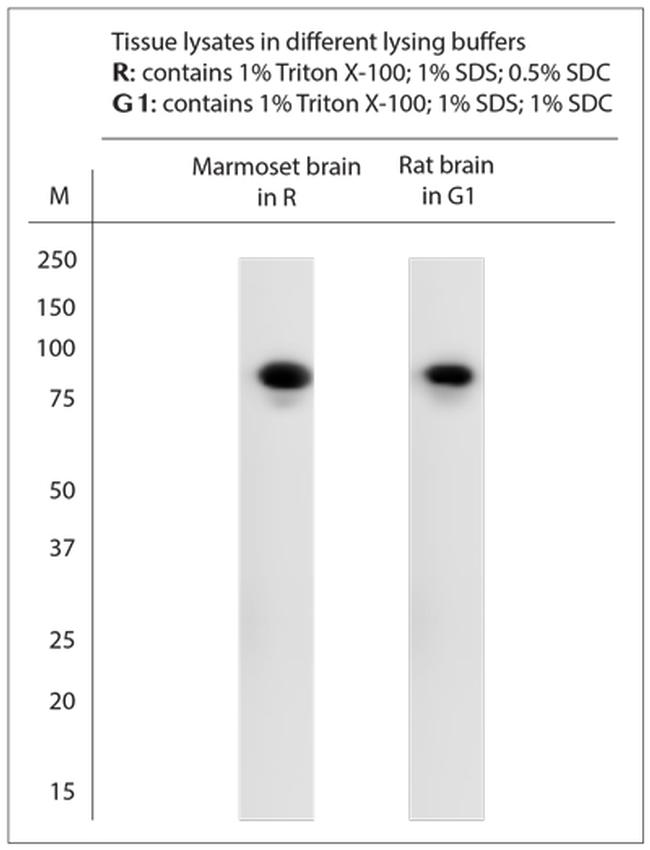Search Thermo Fisher Scientific
Product Details
OSD00037W-100UL
Species Reactivity
Published species
Host/Isotype
Class
Type
Immunogen
Conjugate
Form
Concentration
Storage buffer
Contains
Storage conditions
Shipping conditions
Product Specific Information
Reconstitute in 100 µL of sterile water. Centrifuge to remove any insoluble material.
The peptide is homologous in rat and mouse.
Specificity of this antibody: PSD95.
Target Information
Post Synaptic Density 95 kDa (PSD-95), also known as synapse associated protein 90 kDa (SAP90), is one of a family of membrane-associated proteins found in the postsynaptic density in forebrain neurons and certain presynaptic structures in the cerebellum. Like other members of the family, PSD-95 has three 90 amino acid repeats called PDZ domains followed by an SH3 domain and a yeast guanylate kinase homology (GuK) domain. PSD-95 is believed to participate in the clustering of certain proteins, including NMDA receptors, Shaker-type potassium channels at the synaptic membrane in central nervous system (CNS) neurons. There are two principal modes of interaction between PSD-95 and other proteins. NMDA receptors and shaker-type potassium channels both share C-terminal sequence homology consisting of a threonine/serine-X-valine-COOH (T/SXV) motif. Other neuronal proteins that share this motif (beta 1 adrenergic receptor, some serotonin receptors, some sodium channel subunits, and additional potassium channel subunits), and some of these proteins may interact with PSD-95 by binding to its PDZ domains. Neuronal nitric oxide synthase (nNOS), which lacks the T/SXV motif but which has its own PDZ domain, has been shown to associate with PSD-95 in vitro through a pseudo-homotypic PDZ-PDZ interaction.
For Research Use Only. Not for use in diagnostic procedures. Not for resale without express authorization.
Bioinformatics
Protein Aliases: discs large homolog 4; Disks large homolog 4; FLJ97752; FLJ98574; post synaptic density; post-synaptic density protein 95; Postsynaptic density protein 95; PSD-95; PSD-95 alpha 2b; PSD-95 beta; SAP-90; Synapse-associated protein 90; synapse-associated protein SAP90; Tax interaction protein 15
Gene Aliases: DLG4; Dlgh4; PSD-95; PSD95; SAP-90; SAP90; SAP90A
UniProt ID: (Human) P78352, (Rat) P31016, (Mouse) Q5NCV6
Entrez Gene ID: (Human) 1742, (Rat) 29495, (Mouse) 13385

Performance Guarantee
If an Invitrogen™ antibody doesn't perform as described on our website or datasheet,we'll replace the product at no cost to you, or provide you with a credit for a future purchase.*
Learn more
We're here to help
Get expert recommendations for common problems or connect directly with an on staff expert for technical assistance related to applications, equipment and general product use.
Contact tech support

